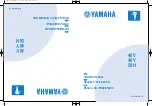
7
MIC-3397 User Manual
Chapter 1
H
ardware
C
onfiguration
–
5 ~ 100 Hz, 1.06 Grms with CFast/SSD (without on-board 2.5" SATA HDD)
on 8HP SKU
Vibration (Non-operating):
5 ~ 500 Hz, 2 Grms
Shock:
10 G (without on-board 2.5” SATA HDD), 11 ms
Shock (Non-operating):
30 G, 11ms (On dual slot SKU)
Board size:
–
6U/1 slot width (4HP): 233.35 x 160 x 20 mm (9.2" x 6.3" x 0.8")
–
6U/2 slot width (8HP): 233.35 x 160 x 40 mm (9.2" x 6.3" x 1.6")
Weight:
–
6U/1 slot width (4HP): 0.83 kg (Bare board)
–
6U/2 slot width (8HP): 1.35 kg (Bare board)
1.2.15
CompactPCI Mechanical Design
MIC-3397 series is assembled with a copper heatsink for CPU & MXM, with alumi-
num heatsink for PCH. However, forced air cooling in the chassis is still needed for
operational stability and reliability.
1.2.16
CompactPCI Bridge
The MIC-3397 uses a Pericom PI7C9X130D universal bridge as a gateway to an
intelligent subsystem. When configured as a system controller, the bridge acts as a
standard transparent PCI Express to PCI/PCI-X Bridge. As a peripheral controller it
allows the local MIC-3397 processor to configure and control the onboard local sub-
system independently from the CompactPCI bus host processor. The MIC-3397 local
PCI subsystem is presented to the CompactPCI bus host as a single CompactPCI
device. When the MIC-3397 is in drone mode, the Pericom PI7C9X130D is electri-
cally isolated from the CompactPCI bus. The MIC-3397 receives power from the
backplane, supports rear I/O.
The Pericom PI7C9X130D PCI bridge offers the following features:
PCI Interface:
–
Full compliance with the PCI Local Bus Specification, Revision 3.0
–
Supports 3.3V PCI signaling with 5V I/O tolerance
Supports transparent mode of operations.
Supports forward bridging
64-bit, 66MHz asynchronous operation
Provides two level arbitration support for 7 PCI Bus masters
16-bit address decode for VGA
Usable in CompactPCI system slot
Please consult the Pericom PI7C9X130D data book for details.
1.2.17
I/O Connectivity
For MIC-3397, the front panel I/O is provided by two RJ-45 Gigabit Ethernet ports,
one RJ-45 COM port, three USB 2.0 ports, one VGA port. Its onboard I/O consists of
two SATA channels, one is connected to a daughter board for 2.5" SATA HDD or
NAND flash and the other is connected to a CFast slot. Rear I/O connectivity is avail-
able via the following CompactPCI connectors:
J3: two Gigabit Ethernet links to the backplane for PICMG 2.16 packet switch,
two SATA port, PCIe Gen3 x4 on the RTM.
J5: Two Gigabit Ethernet LAN ports, two COM ports, three USB ports, one PS/2
port (for keyboard/mouse) and one VGA port on the RTM.
Summary of Contents for MIC-3397
Page 8: ...MIC 3397 User Manual viii...
Page 12: ...MIC 3397 User Manual 12...
Page 13: ...Chapter 1 1 Hardware Configuration This chapter describes how to configure MIC 3397 hardware...
Page 35: ...Chapter 2 2 AMI BIOS Setup This chapter describes how to configure the AMI BIOS...
Page 60: ...MIC 3397 User Manual 48...
Page 61: ...Appendix A A Pin Assignments This appendix describes pin assignments...
Page 68: ...MIC 3397 User Manual 56...
Page 71: ...Appendix C C FPGA This appendix describes FPGA configuration...
Page 73: ...Appendix D D Glossary...
















































